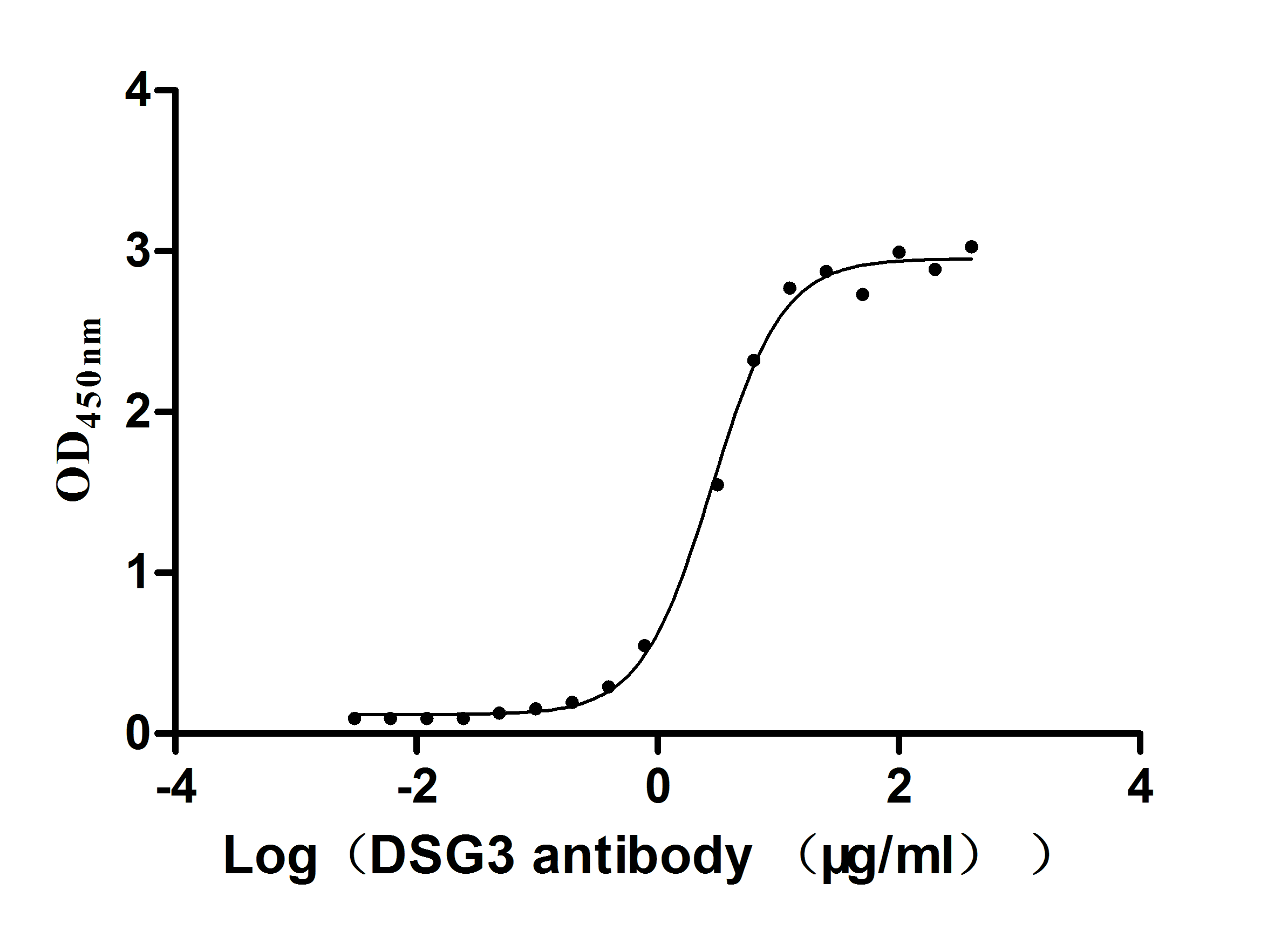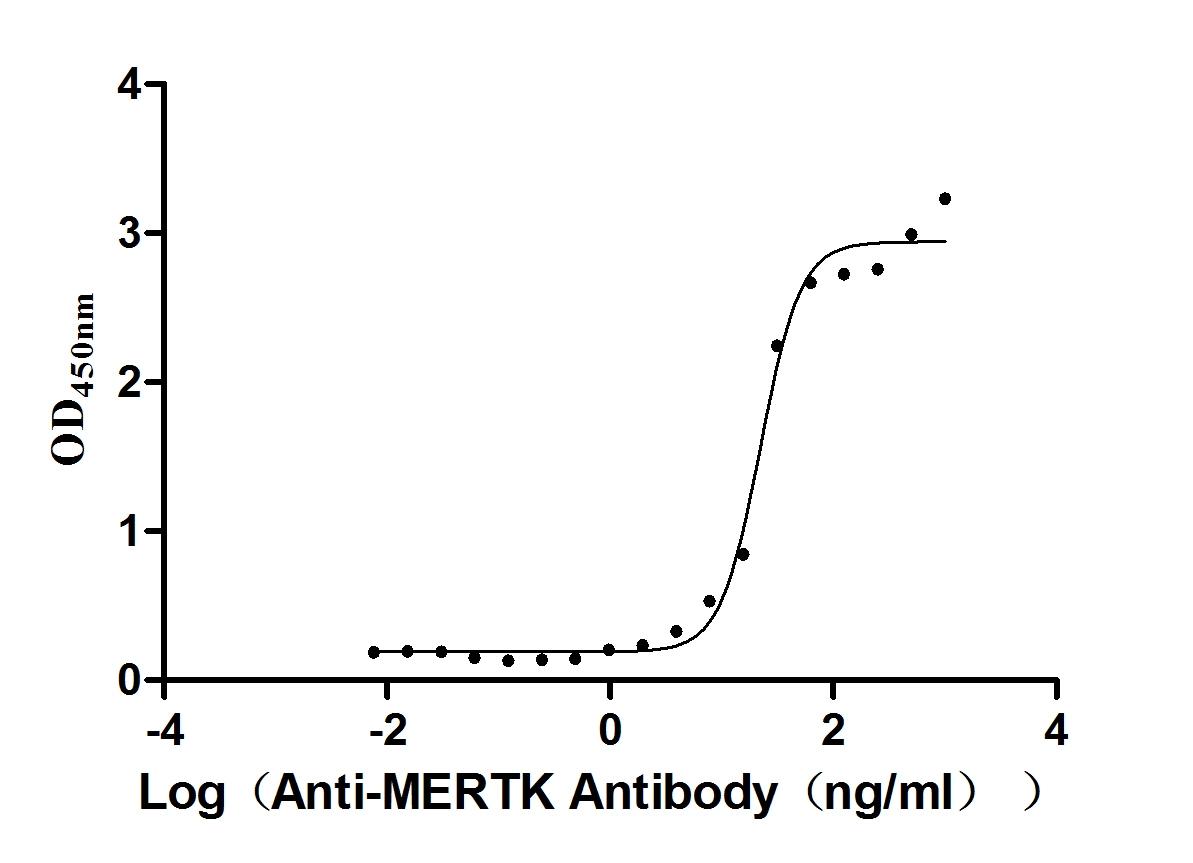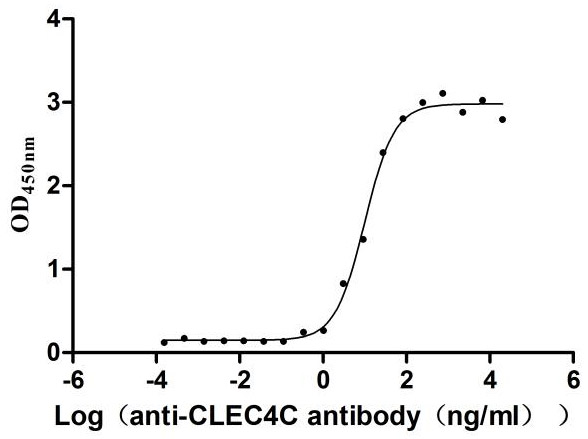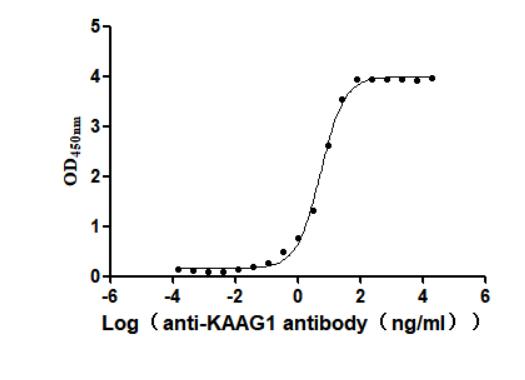Recombinant Human herpesvirus 1 Envelope glycoprotein G (gG), partial
-
中文名稱:Recombinant Human herpesvirus 1 Envelope glycoprotein G(gG) ,partial,Yeast
-
貨號:CSB-YP361844HWY1
-
規(guī)格:
-
來源:Yeast
-
其他:
-
中文名稱:Recombinant Human herpesvirus 1 Envelope glycoprotein G(gG) ,partial,Yeast
-
貨號:CSB-EP361844HWY1-B
-
規(guī)格:
-
來源:E.coli
-
共軛:Avi-tag Biotinylated
E. coli biotin ligase (BirA) is highly specific in covalently attaching biotin to the 15 amino acid AviTag peptide. This recombinant protein was biotinylated in vivo by AviTag-BirA technology, which method is BriA catalyzes amide linkage between the biotin and the specific lysine of the AviTag.
-
其他:
-
中文名稱:Recombinant Human herpesvirus 1 Envelope glycoprotein G(gG) ,partial,Yeast
-
貨號:CSB-BP361844HWY1
-
規(guī)格:
-
來源:Baculovirus
-
其他:
-
中文名稱:Recombinant Human herpesvirus 1 Envelope glycoprotein G(gG) ,partial,Yeast
-
貨號:CSB-MP361844HWY1
-
規(guī)格:
-
來源:Mammalian cell
-
其他:
產(chǎn)品詳情
-
純度:>85% (SDS-PAGE)
-
基因名:gG
-
Uniprot No.:
-
別名:gG; US4; Envelope glycoprotein G; gG; gG-1
-
種屬:Human herpesvirus 1 (strain 17) (HHV-1) (Human herpes simplex virus 1)
-
蛋白長度:Partial
-
蛋白標(biāo)簽:Tag?type?will?be?determined?during?the?manufacturing?process.
The tag type will be determined during production process. If you have specified tag type, please tell us and we will develop the specified tag preferentially. -
產(chǎn)品提供形式:Lyophilized powder
Note: We will preferentially ship the format that we have in stock, however, if you have any special requirement for the format, please remark your requirement when placing the order, we will prepare according to your demand. -
復(fù)溶:We recommend that this vial be briefly centrifuged prior to opening to bring the contents to the bottom. Please reconstitute protein in deionized sterile water to a concentration of 0.1-1.0 mg/mL.We recommend to add 5-50% of glycerol (final concentration) and aliquot for long-term storage at -20℃/-80℃. Our default final concentration of glycerol is 50%. Customers could use it as reference.
-
儲存條件:Store at -20°C/-80°C upon receipt, aliquoting is necessary for mutiple use. Avoid repeated freeze-thaw cycles.
-
保質(zhì)期:The shelf life is related to many factors, storage state, buffer ingredients, storage temperature and the stability of the protein itself.
Generally, the shelf life of liquid form is 6 months at -20°C/-80°C. The shelf life of lyophilized form is 12 months at -20°C/-80°C. -
貨期:Delivery time may differ from different purchasing way or location, please kindly consult your local distributors for specific delivery time.Note: All of our proteins are default shipped with normal blue ice packs, if you request to ship with dry ice, please communicate with us in advance and extra fees will be charged.
-
注意事項:Repeated freezing and thawing is not recommended. Store working aliquots at 4°C for up to one week.
-
Datasheet :Please contact us to get it.
相關(guān)產(chǎn)品
靶點詳情
-
功能:Chemokine-binding protein that inhibits neutrophils' chemotaxis.
-
基因功能參考文獻:
- HSV-1 Us3 is a multifunctional protein that plays various roles in the viral life cycle by phosphorylating a number of viral and cellular substrates. [review] PMID: 29896662
- It regulates the pathogenicity of herpes simplex virus type-1 PMID: 28484184
- This study identifies the alphaherpesvirus-specific Us3 kinase as an mTORC1 activator that subverts the host cell energy-sensing program to support viral productive growth irrespective of physiological stress. PMID: 28468873
- findings show that Us8A is a virulence factor for HSV-1 infection in mice, and the function of Us8A for viral invasion into the central nervous system from peripheral sites is regulated by Us3-mediated phosphorylation of the protein at Ser-61. PMID: 27030266
- The difference between HSV-1 and HSV-2 Us3 kinases appeared to be due to the fact that some Us3 phosphorylation sites in HSV-1 proteins are not conserved in the corresponding HSV-2 proteins. PMID: 26491159
- Us3 enables the nucleus to cytoplasm capsid translocation. Nevertheless, Us3 is not essential for the production of infective progeny viruses. PMID: 25588052
- HSV-1-encoded Us3 protein interrupted TCR signaling and interleukin-2 production by inactivation of the linker for activation of T cells. PMID: 25907557
- Ablation of this phosphorylation abolished herpes simplex virus 1 US3-mediated downregulation of CD1d expression, suggesting that phosphorylation of KIF3A is the primary mechanism of viral suppression of CD1d expression. PMID: 25878107
- This study demonstrated that herpes simplex virus 1 protein kinase US3 significantly inhibited NF-kappaB activation via hyperphosphorylation of p65 and decreased the expression of inflammatory chemokine interleukin-8 (IL-8). PMID: 24807716
- Sufficient dUTPase activity was required for efficient herpes simplex virus 1 replication and Us3 phosphorylation of viral dUTPase Ser-187 upregulated dUTPase activity in host cells with low cellular dUTPase activity. PMID: 24760895
- STING is stable in cancer-derived HEp-2 or HeLa cells infected with wild-type HSV-1 but is degraded in cells infected with mutants lacking the genes encoding functional infected cell protein 0 (ICP0), ICP4, or the US3 protein kinase PMID: 24449861
- Herpes simplex virus 1 US3 hyperphosphorylates IRF3 and inhibits beta interferon production. PMID: 24049179
- Human herpesvirus 1 US3 is necessary and sufficient for inhibiting TLR2 signaling at or before the stage of TRAF6 ubiquitination. PMID: 23478027
- US3 plays a significant role in down-regulation of membrane biosynthesis. PMID: 22789738
- These results suggested that Us3 phosphorylation of UL47 Ser-77 promoted the nuclear localization of UL47 in cell cultures and played a critical role in viral replication and pathogenesis in vivo. PMID: 21734045
- identified gB and US3 as two viral factors that together downregulate CD1d surface expression; results suggest that HSV-1 uses gB and US3 to rapidly inhibit NKT cell function in the initial antiviral response PMID: 21653669
- The authors demonstrated that Us3 phosphorylation of glycoprotein B Thr-887 upregulated the accumulation of endocytosed of glycoprotein B from the surfaces of infected cells. PMID: 21389132
- Us3 is an Akt surrogate with overlapping substrate specificity to activate mTORC1, stimulating translation and virus replication PMID: 21123650
- Us3 phosphorylation of gB Thr-887 played a critical role in viral replication in vivo and in HSV-1 pathogenesis PMID: 19846518
- This prostein accumulates in cells infected with the mutant lacking the gene encoding ICP22 mediated the phosphorylation of histone deacetylase. PMID: 15956590
- U(S)3 and U(S)3.5 protein kinases of herpes simplex virus 1 differ with respect to their functions in blocking apoptosis and in virion maturation and egress. PMID: 16571792
- U(S)3 protein kinase blocks histone deacetylation by a mechanism distinct from that of ICP0. PMID: 16785443
- It was concluded that US3 was mediating the suppression of mitochondrial respiration following HHV-1 infection. PMID: 16847111
- Us3, Us5, and Us12 viral genes each have unique inhibitory effects on the different T lymphocyte cytotoxic effects PMID: 16987059
- US3 blocks the proteolytic cleavage that generates active caspase 3 from the transfected zymogen procaspase 3, concomitant with inhibition of apoptosis. PMID: 17634220
- These results supported the hypothesis that Us3 phosphorylates gB and downregulates the cell surface expression of gB in HSV-1-infected cells. PMID: 18945776
- The majority of the US3-dependent phosphorylation of gB involved the CT domain and amino acid T887, a residue present in a motif similar to that recognized by US3 in other proteins. PMID: 19158241
- US3-mediated phosphorylation of UL31 is critical to regulate nuclear egress. PMID: 19279109
- regulation of Us3 activity by autophosphorylation appeared to play a critical role in viral replication in vivo and in HSV-1 pathogenesis PMID: 19297494
- regulatory and functional effects differ from Us3 protein kinase in herpes simplex virus 2 PMID: 19740999
顯示更多
收起更多
-
亞細胞定位:Virion membrane; Single-pass type I membrane protein.
-
蛋白家族:Alphaherpesvirinae glycoprotein G family
-
數(shù)據(jù)庫鏈接:
KEGG: vg:2703404
Most popular with customers
-
Recombinant Mouse Desmoglein-3 (Dsg3), partial (Active)
Express system: Mammalian cell
Species: Mus musculus (Mouse)
-
Recombinant Human Prolactin receptor (PRLR), partial (Active)
Express system: Mammalian cell
Species: Homo sapiens (Human)
-
Recombinant Mouse Microtubule-associated protein tau (Mapt) (Active)
Express system: Mammalian cell
Species: Mus musculus (Mouse)
-
Recombinant Mouse Tyrosine-protein kinase Mer (Mertk), partial (Active)
Express system: Mammalian cell
Species: Mus musculus (Mouse)
-
Recombinant Human C-type lectin domain family 4 member C (CLEC4C), partial (Active)
Express system: Mammalian cell
Species: Homo sapiens (Human)
-
Recombinant Human Oncostatin-M (OSM), partial (Active)
Express system: Mammalian cell
Species: Homo sapiens (Human)
-
Recombinant Human Kidney-associated antigen 1(KAAG1) (Active)
Express system: Baculovirus
Species: Homo sapiens (Human)
-
Recombinant Macaca fascicularis Zinc transporter ZIP6 isoform X1(SLC39A6),partial (Active)
Express system: Baculovirus
Species: Macaca fascicularis (Crab-eating macaque) (Cynomolgus monkey)




















